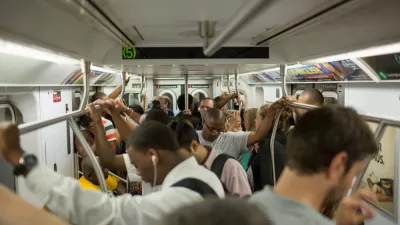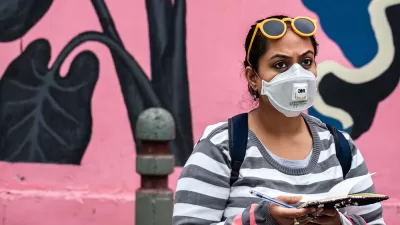Detailed animations of ventilation systems in New York City subway cars provide transit riders with a better understanding of the possibility of community spread in subway cars.

Former public transit riders wary of returning to New York subways might cite uncertainty about safety conditions and community spread as a reason for avoiding the popular form of transportation. Doing their part to arm the public with information, Mika Gröndahl, Christina Goldbaum, and Jeremy White published a New York Times article complete with in-depth information about the possibility of spread on New York City subways complete with helpful animations. Now subway riders can understand the risks, safety measures, and interventions for preventing community spread when riding the subway.
"Many New Yorkers are avoiding the subway, fearful of jostling with strangers in crowded cars. Masks and social distancing are essential, but good air flow is also key to reducing the risk of exposure to the coronavirus," write Gröndahl, Goldbaum, and White.
In one animation, a side-by-side comparison simulates the spread of droplets from someone sneezing with and without a mask, showing the efficacy of mask wearing in public spaces for reducing viral spread. "Public health experts say that the high air exchange rate and widespread mask usage on the city’s subways sharply reduces the chances of a so-called superspreader event on trains," say Gröndahl, Goldbaum, and White.
The team notes that only 2% of the 5.5 million weekday New York City subway riders currently occupy trains. Public health experts say that if pre-pandemic occupancy levels were suddenly reached, even with masks, the efficacy of the ventilation system would be greatly reduced.
FULL STORY: What Happens to Viral Particles on the Subway

Alabama: Trump Terminates Settlements for Black Communities Harmed By Raw Sewage
Trump deemed the landmark civil rights agreement “illegal DEI and environmental justice policy.”

Planetizen Federal Action Tracker
A weekly monitor of how Trump’s orders and actions are impacting planners and planning in America.

The 120 Year Old Tiny Home Villages That Sheltered San Francisco’s Earthquake Refugees
More than a century ago, San Francisco mobilized to house thousands of residents displaced by the 1906 earthquake. Could their strategy offer a model for the present?

In Both Crashes and Crime, Public Transportation is Far Safer than Driving
Contrary to popular assumptions, public transportation has far lower crash and crime rates than automobile travel. For safer communities, improve and encourage transit travel.

Report: Zoning Reforms Should Complement Nashville’s Ambitious Transit Plan
Without reform, restrictive zoning codes will limit the impact of the city’s planned transit expansion and could exclude some of the residents who depend on transit the most.

Judge Orders Release of Frozen IRA, IIJA Funding
The decision is a victory for environmental groups who charged that freezing funds for critical infrastructure and disaster response programs caused “real and irreparable harm” to communities.
Urban Design for Planners 1: Software Tools
This six-course series explores essential urban design concepts using open source software and equips planners with the tools they need to participate fully in the urban design process.
Planning for Universal Design
Learn the tools for implementing Universal Design in planning regulations.
Clanton & Associates, Inc.
Jessamine County Fiscal Court
Institute for Housing and Urban Development Studies (IHS)
City of Grandview
Harvard GSD Executive Education
Toledo-Lucas County Plan Commissions
Salt Lake City
NYU Wagner Graduate School of Public Service





























